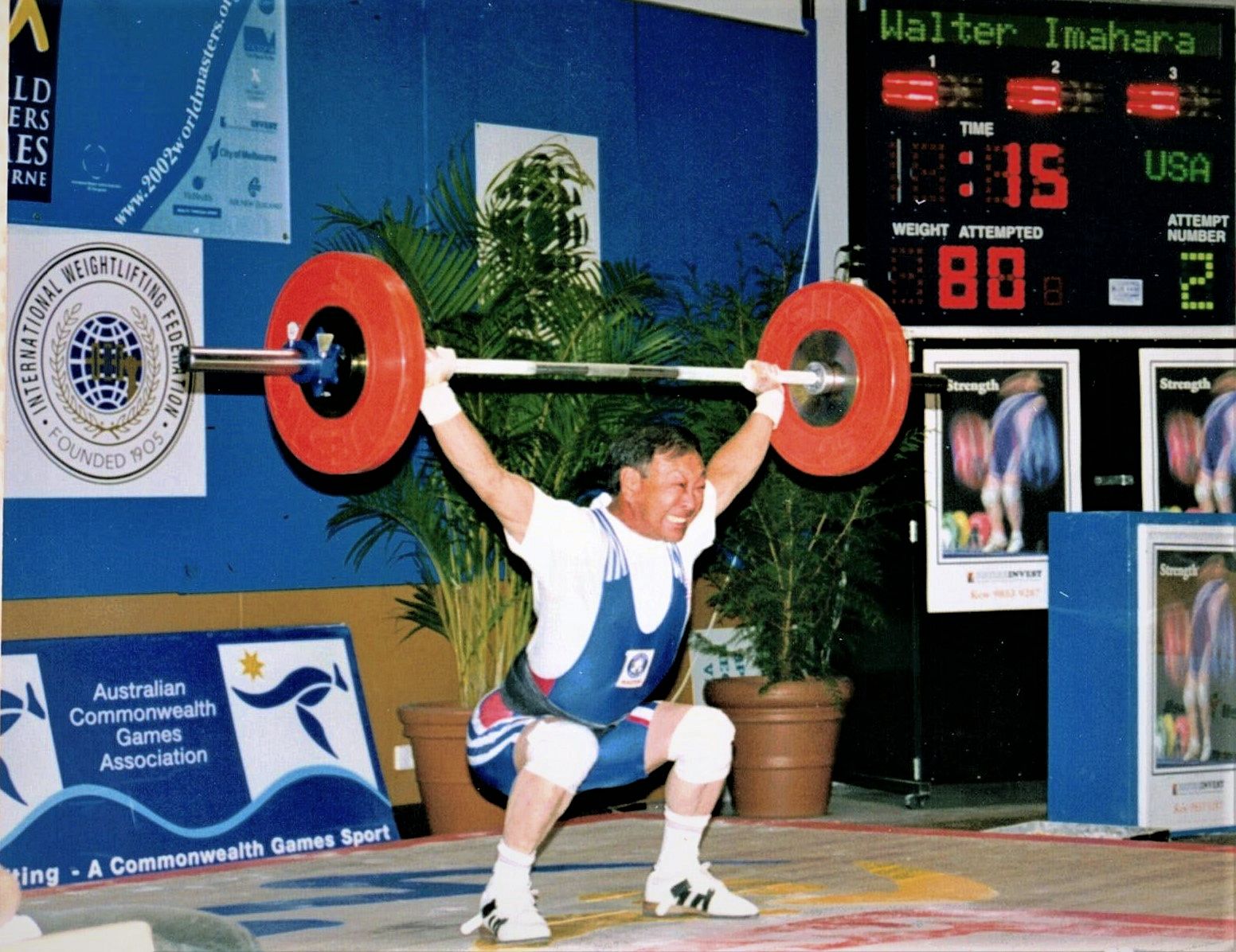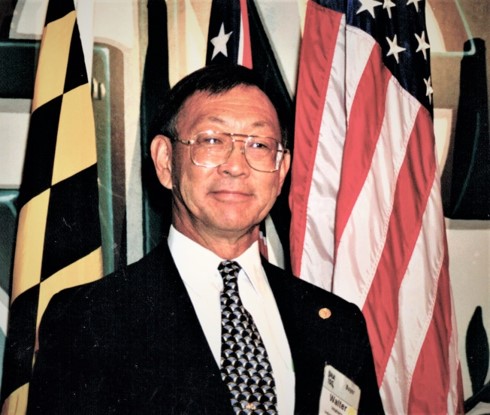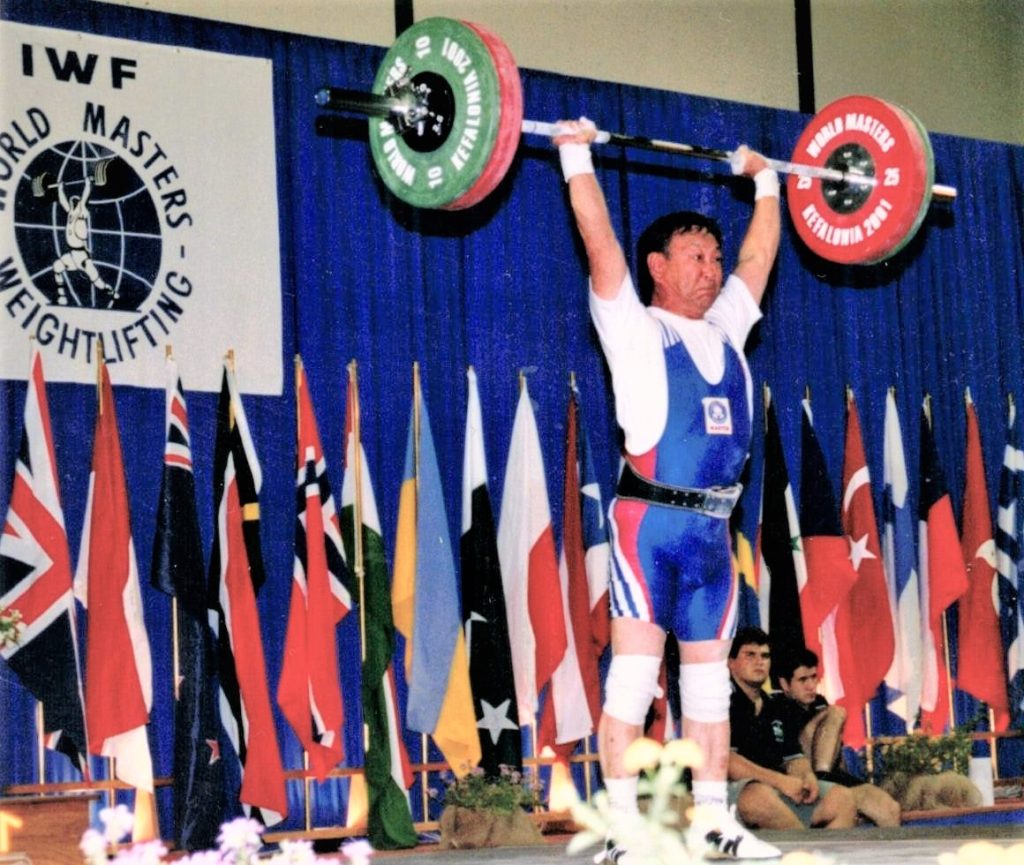Determination, maximum effort are trademarks of Walter Imahara’s incredible life, career

By BRUCE BROWN, Written for the LSWA
Never look back. That’s not where you’re going.
If anyone had a reason to look back and wonder why things were as they appeared, Walter Imahara might have had a reason.
Imahara is a Japanese American citizen, born on Valentine’s Day, 1937, in Sacramento, Calif.
When he was 4 years old, Japan attacked the U.S. Navy fleet in Pearl Harbor, Hawaii, drawing the United States into World War II.
Shaken by the attack, U.S. officials ordered all West Coast citizens of Japanese descent to be moved inland to “work camps” for the duration of the war.
“My family was kept in a concentration camp for 2 1//2 years during the war,” Imahara said. “They called them relocation centers, but they were camps.”
Conditions were less than acceptable, but the family with nine children adapted the best they could.
“One bit of Japanese philosophy is that we never look back,” Imahara said. “We always had a quiet determination to better ourselves, even though we didn’t have anything.
“We got that philosophy from our parents. Education was stressed to all my brothers and sisters, and myself,”
He added, “Japanese Americans comprise one half of one percent of the population, and we have one of the lowest crime rates, highest rates of education, and lowest rates of marriage failure passed down.”
Strengthened by that outlook, Imahara sought his path in life.

His incredible journey has carried him into the Louisiana Sports Hall of Fame, with the Class of 2023 Induction Celebration July 27-29 in Natchitoches. Information and tickets are available at LaSportsHall.com or by calling 318-238-4255.
The family moved to New Orleans and then to Baton Rouge after the war, and Imahara graduated from Istrouma High School in 1955.
He found LSU students unaccepting and so headed for Southwestern Louisiana Institute (now the University of Louisiana at Lafayette), where he discovered the two things — weightlifting and horticulture — that would steer his course for the rest of his life.
“The people at LSU looked at you funny,” Imahara said. “When I went to SLI, I got a good feeling from the beginning. People there weren’t prejudiced.”
In college, a chance meeting with Mike Stansbury prompted Imahara to try the sport of weightlifting.
“Mike asked me if I’d like to try it, and I did,” Imahara said.
In his first meet, competing as a bantamweight, Imahara pressed 130 kg, snatched 125 and had a clean and jerk of 170 for a modest 425 total that placed second.
It lit a fire that led to three national collegiate individual titles in 1957, 1959 and 1960 as well as team titles for the Ragin’ Cajuns. He was the first athlete to receive a letter in his sport, and by the time he received his degree in agriculture and horticulture, he was introduced as the school’s first “Asian Cajun.”
He kept competing after college, wedging competition into his service in the U.S. Army after college. His sense of citizenship and duty helped him to serve the nation that packed him off to work camps. He became a lieutenant in artillery and at one point was stationed in Dacau, Germany.
In competition, Imahara won the U.S national title six times from 1962-68, and won the Pan American Games gold medal.
At his peak in 1968, competing at 140 pounds at the Southern AAU meet in New Orleans, Imahara had upped his totals to 255 press, 240 snatch and 320 clean and jerk for a total of 815.
 Imahara retired from the sport, then returned in 1980 at the masters level, where he won 25 gold medals in US. competition, 10 more golds in World Masters action and 16 golds in Pan American Games meets.
Imahara retired from the sport, then returned in 1980 at the masters level, where he won 25 gold medals in US. competition, 10 more golds in World Masters action and 16 golds in Pan American Games meets.
He competed until 2005 to compile a remarkable lifting career that began almost by chance.
“Everything has a beginning and an ending,” Imahara said, “And there are cutoff points to each phase of one’s life. The Japanese believe in completions and in making the maximum effort possible in each phase as you live it. When you have completed that phase, you move on to another phase of your life.”
To many, Imahara is as well known for his horticulture career as he is for weightlifting. He has created three remarkable Japanese American gardens in St. Francisville guided by Imahara Landscape and Nursery in Baton Rouge,
The Legacy Gardens, open to the public from 2011-18, was sold in 2018. Now open to the public is Imahara’s Legacy Garden at Hemingbough. He puts just as much attention for detail into his gardens as he did on the weightlifting platform.
Imahara and wife Sumile have traveled the world, eager to discover new horizons.
One prized acquisition is an Imahara family monument, found in a church yard in Hiroshima, Japan, undamaged by the U.S atomic bomb dropped on that city to help end World War II.
The same war that dislodged the Imahara family and sent them — and Walter — to their destiny.
- < PREV Allstate Sugar Bowl to honor Tulane Football and Lisa Stockton with Jimmy Collins Awards
- NEXT > Louisiana’s Sugar Bowl Country Kickoff tickets go on sale Friday





